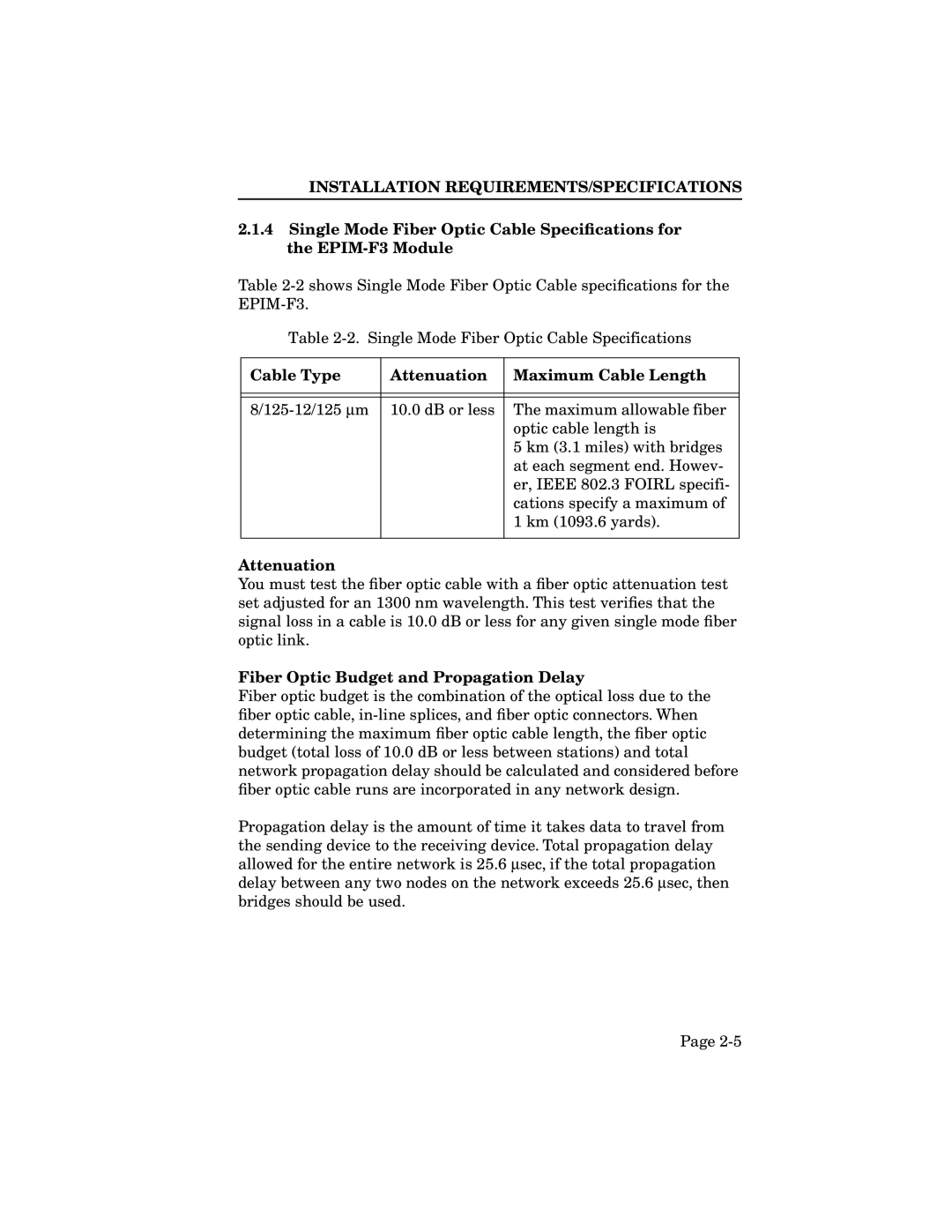INSTALLATION REQUIREMENTS/SPECIFICATIONS
2.1.4Single Mode Fiber Optic Cable Specifications for the
Table
Table
Cable Type | Attenuation | Maximum Cable Length |
|
|
|
|
|
|
10.0 dB or less | The maximum allowable fiber | |
|
| optic cable length is |
|
| 5 km (3.1 miles) with bridges |
|
| at each segment end. Howev- |
|
| er, IEEE 802.3 FOIRL specifi- |
|
| cations specify a maximum of |
|
| 1 km (1093.6 yards). |
|
|
|
Attenuation
You must test the fiber optic cable with a fiber optic attenuation test set adjusted for an 1300 nm wavelength. This test verifies that the signal loss in a cable is 10.0 dB or less for any given single mode fiber optic link.
Fiber Optic Budget and Propagation Delay
Fiber optic budget is the combination of the optical loss due to the fiber optic cable,
Propagation delay is the amount of time it takes data to travel from the sending device to the receiving device. Total propagation delay allowed for the entire network is 25.6 ∝sec, if the total propagation delay between any two nodes on the network exceeds 25.6 ∝sec, then bridges should be used.
Page
